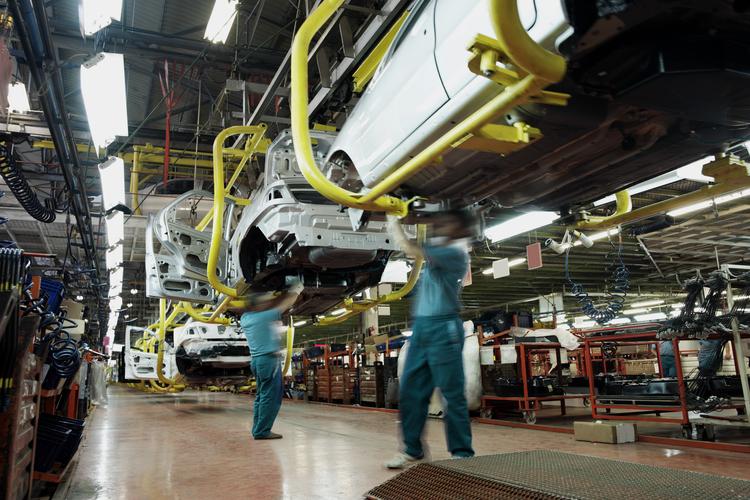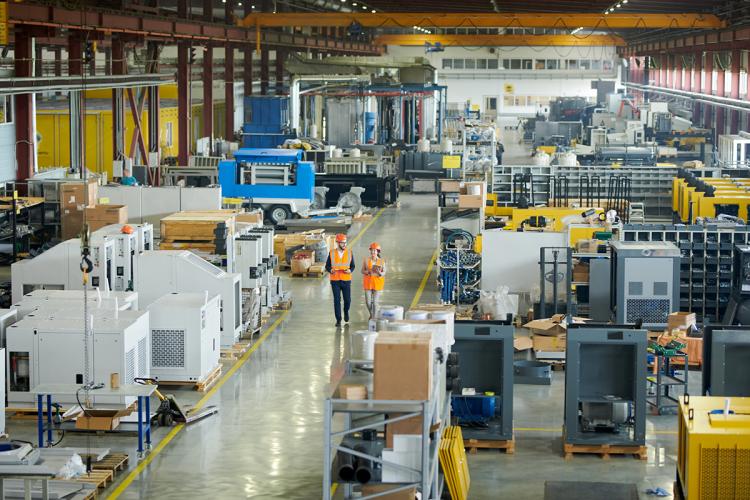Drive Plant Profitability: How the Auto Sector is Accelerating Efficiency
Drive Plant Profitability: How the Auto Sector is Accelerating Efficiency
Drive Plant Profitability: How the Auto Sector is Accelerating Efficiency
Automakers and automotive suppliers across the world are facing change unlike any other time in the industry's history. If the past is any indication, however, these companies won’t shy away from the unrelenting pace of transformation that digitalization and connectivity in manufacturing technologies—or Industry 4.0—have ushered in.
The auto industry has always embraced technological advancements, starting with the assembly line, which ultimately spurred the second major industrial revolution in the 1870s. Today, the industry also reflects the most widespread use of factory automation and robotics in the world, trends that swept commercial manufacturing going back to the 1970s.
Industry 4.0 is not only impacting the design of vehicles, but also the factories in which they’re made.
Clearly, the auto sector has always been a driving force in adopting new production methods, and Industry 4.0 is no different. Bringing about massive shifts in digitalization, Industry 4.0 is not only impacting the design of vehicles, but also the factories in which they’re made. Many automotive manufacturers are investing in emerging digital tools as they look to gain, or simply maintain, market share in an increasingly competitive global market.
Newly Intelligent Infrastructure
The Industrial Internet of Things (IIoT) seems to be everywhere today, promising a brighter world where operational technologies connect with information technologies to maximize business productivity. According to leading research and advisory company Gartner, Inc., "The dream of concepts like Industrie (sic) 4.0 and industrial IoT and connected cars is to liberate information to create better products, to enable new ways of owning or using vehicles, and to build vehicles more efficiently."1
Of course, automakers are always looking to take cost out of their products and boost productivity. Increasingly, the focus is on connecting machines and equipment to visualize the manufacturing operation as never before, where data-driven insights lead to improved decision-making.
In fact, a connected enterprise where disparate systems and devices speak the same language, and where intelligent end points and advanced software analytics drive optimized product and process designs, is the goal of a growing number of companies across the auto sector.
It even has some (literally) looking up for the answers. Most plant owners have heard of the energy-saving potential of LED lighting, but the ability to leverage this infrastructure to create a more intelligent environment is lesser known. In fact, the integration of sensors, controls and other hardware enables LED lighting to become a perceptive and discerning wireless communications network capable of compiling data and applying the software analytics that can enable greater plant efficiency.
To this end, some forward-thinking manufacturers are starting to imagine a ubiquitous mesh network extending to all corners of the plant, enabled by LED lights with intelligent onboard components. This “bird’s-eye view” of the factory is unique to lighting infrastructure, which can function like a nervous system in connected future facilities, where smart fixtures actively monitor critical activities and data points, sharing this information with other systems and, most importantly, the people on the plant floor who can respond accordingly.
Today, a lighting conversion is an opportunity to future-proof your manufacturing operation while simultaneously saving up to 70 percent on lighting-related energy costs. According to the U.S. Energy Information Administration, facility lighting represents about 15 percent of the average automobile manufacturer’s total electric spend. Companies are seizing this opportunity to drastically reduce their energy use and put real savings back into their business. Some have even started down this road by installing LED fixtures that can be upgraded with the appropriate hardware when the time comes.
Energy savings and data insights can create incredible efficiencies for the auto sector, and at Current, we’re enabling both outcomes for our customers. See how others are accelerating digital transformation in their plants.
1 Gartner, 2018 CIO Agenda: Automotive Industry Insights, 2 October 2017






